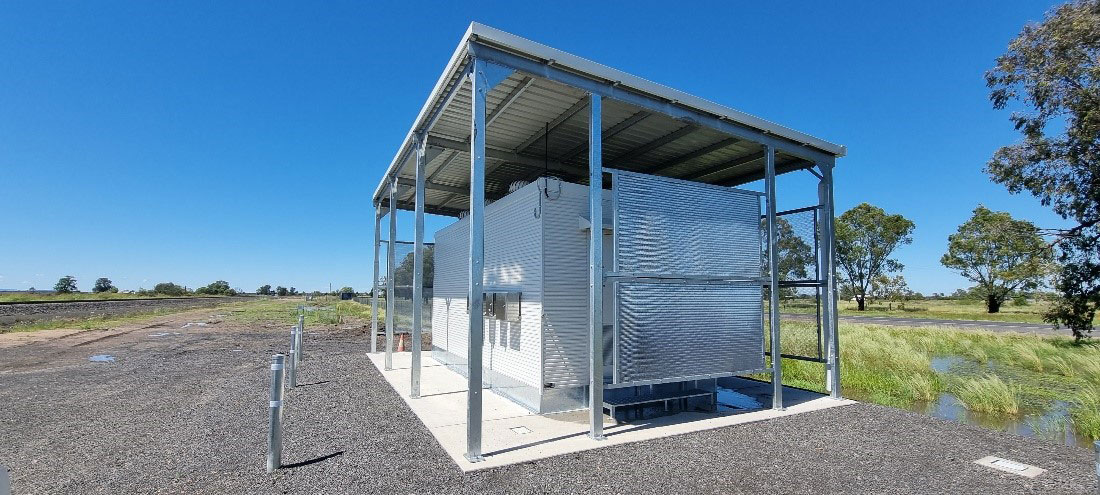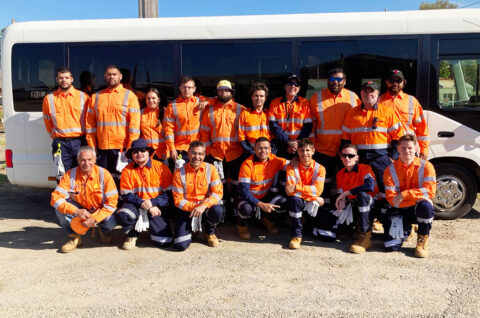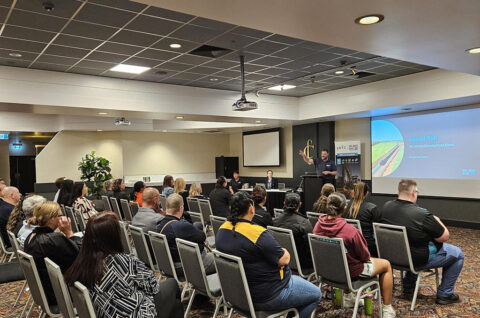Passive cooling for signalling huts bolsters sustainability on Inland Rail
The Australian Rail Track Corporation (ARTC) is looking to expand the use of passive cooling designs for its Inland Rail signalling huts, which is a boost for the sustainability of the project.

The huts will have improved building design alterations, which aim to minimise heat-gain and cool buildings with less energy required compared to standard air-conditioning.
Signalling huts, which are used to house power, communications and signalling equipment, are dispersed along the Inland Rail alignment.
The huts contain vital, sensitive infrastructure which controls all trackside operations equipment within a track segment – including lights and signals, trains detection equipment, and point motors, and this infrastructure interacts with ARTC network control.
Historically, signalling huts have been cooled by air-conditioning, a method which is often costly, highly electricity resource dependant, and incurs continued maintenance costs and alterations due to exposure to Australia’s harsh climatic elements.
Rebecca Pickering, Acting Chief Executive Inland Rail, said:
‘ARTC Inland Rail is committed to working in partnership with our stakeholders, private sector suppliers, and communities to deliver long-term value, while keeping sustainability at the forefront of everything we do.
‘By implementing passive cooling instead of air-conditioning to keep the signalling huts cool, it will lead to a reduction in standing load and power consumption.
‘It also means there will be no additional maintenance and alarm call outs for air-conditioning failure, and lower, or cost neutral, capital cost of shade structures compared to air-conditioning.
‘The hut design was trialled on the Murgo Loop section of the Narrabri to North Star project and, comparatively compared to air-conditioning, the use of passive cooling resulted in a 26% reduction in energy consumption in a 24-hour period.
‘Adopting the passive cooling system not only reduced energy consumption but was also able to maintain the integrity of the signalling system under heat conditions – improving performance compared to traditional air conditioning methods.
The reduction in power consumption has also enabled Inland Rail to make the switch from mains to solar supply viable, another great initiative from our Rail Systems Team.
‘From the outset of the Inland Rail project, we’ve aspired to forge a reputation as an industry leader in sustainability.
‘We know that sustainability is about much more than the environment and resource use which is why revitalising local economies through sustainable jobs and investment in new industries remains a key priority for the Inland Rail team and our contractors.
‘While Inland Rail’s leadership team is responsible for leading our culture of sustainability, we know that success isdependent on the ongoing empowerment of the entire workforce to create and foster a culture of sustainability awareness and action within all ours teams.’



